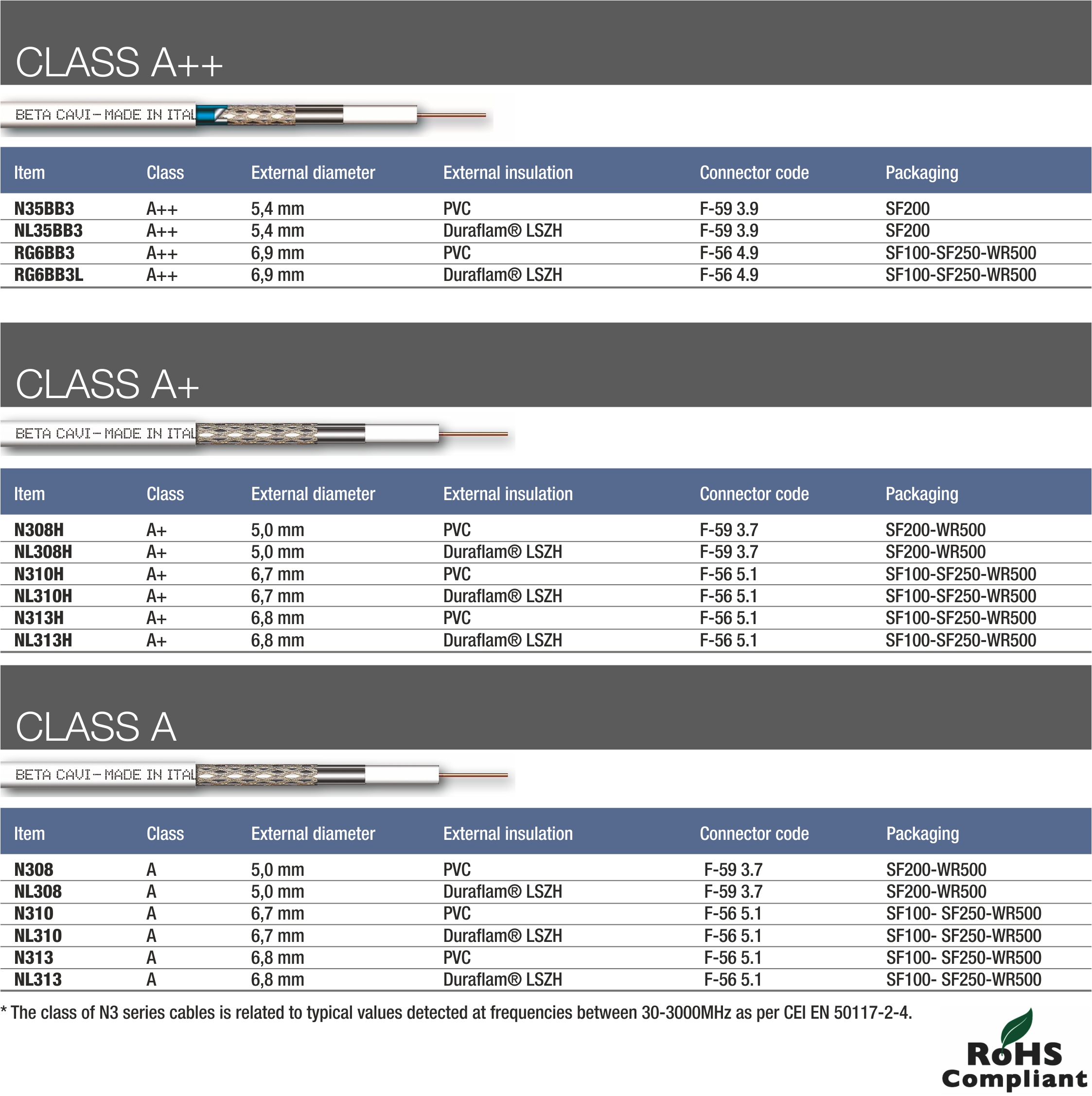Scarica il fascicolo informativo. Nuova generazione di cavi per sistemi di Videosorveglianza

Technical specifications

Analog, digital terrestrial, TV Sat
If the 75 ohm coaxial cables have the common denominator to carry video signals, it’s good to remember that not all of them travel at the same frequency but are allocated in different band strokes.
The European standard EN 50117 classifies the suitability of the cables depending on the application both for the materials suitable for the outer coating and in terms of shielding efficiency.
The recommendations of EN 50117 include:
Antenna descent cables for indoor and outdoor use 5 – 1000 MHz frequency range
System type: Analog and digital TV
Requirement: Cables in Class A + A B C
Antenna descent cables for indoor and outdoor use Frequency range from 5 to 3000 MHz
System type: Analog and digital TV SAT
Requirement: Cables in class A + A B C
Dorsal (primary and secondary) cables for internal and external use Frequency range from 5 to 1000 MHz
System type: Analog and digital TV
Requirement: Cables in class A ++ A +
SUPER SCREENED CABLES IN CLASS A+ FOR TV PLANTS (DTH – DTT – LTE)
The transmission of LTE signals
The evolution of modern mobile communications technologies is the result of the insisting demands of an increasingly demanding and attentive development market in order to ensure greater flexibility, competitiveness and speed.
LTE (Long Term Evolution) represents today the most innovative and reliable data transfer technology using existing infrastructures thanks to mobile repeaters throughout the country.
LTE technology is therefore an integral part of existing UMTS technology and aims at increasing data rates (100 Mbps DL – 50 Mbps UL), latency reduction (5 ms), greater flexibility in the width of the data bandwidth (up to 20 MHz) and cost reduction.
Defined as fourth-generation 4G technology, it allows multiple parallel data transmissions to multiple receivers in order to improve data capabilities transmitted to the single user to allow for optimization of spectral efficiency performance by providing higher performance targets.
Receiving LTE signals
The reception and distribution of LTE signals does not really represent any particular criticality provided that the 75 ohm coaxial cables used for data sharing are in Class A + (EN 50117 for shielding efficiency) and have SLR values return loss> 30 dB (in frequencies between 5-3000 MHz).

